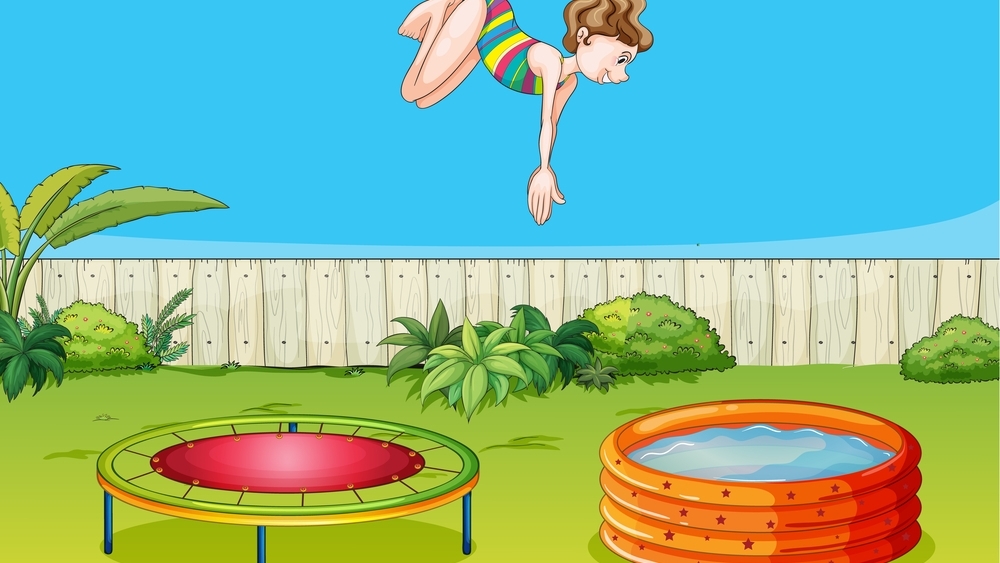
Family time in a backyard pool or on a trampoline can provide hours of entertainment and many years worth of memories. But, as a homeowner, pools and trampolines also mean extra insurance costs and a heavy weight of responsibility to keep family members, friends and neighbors safe.
The responsibility bar is set high. Across the country, local and state governments require homeowners to provide safety mechanisms to prevent backyard tragedies. And the vast majority of homeowners do everything they can to ensure safety. If you are negligent with such precautions, particularly if you failed to take measures required by law, you will almost certainly be found liable.
Pools. Without a doubt the most important feature you should have around the pool is a tall fence with a locking gate. Many local governments require at least a four-foot fence. There must be a barrier to access the pool and the gate must lock automatically from the outside or the latch be too high for a young child to reach. If a door from the house opens directly to the pool area, install a chime on the door so that when anyone opens that door, you are made aware of it.
Cover the pool when it is not in use. Not only does it keep out leaves and debris but people as well. Around the pool deck, slip-resistant surfaces provide for safer walking. Do not allow anyone to run on the pool deck. If the pool is not deep enough for diving, post signs prohibiting diving. Children and teens should be supervised in a pool at all times and no one should swim alone. While people are swimming in your pool, a responsible adult should be watching at all times because a swimmer in trouble may not realize it and may not signal for help.
Trampolines. Trampolines should have padding around the springs, hooks and metal outer rim. A protective net barrier around the perimeter is crucial. Do not provide a ladder or steps to access the trampoline. This will prevent young children from accessing it unsupervised. The trampoline should be in a fenced area with a self-locking gate or a latch high enough to prevent young children from accessing unsupervised. Keep the trampoline a safe distance away from structures, such as fences, any sort of building or trees.
While using the trampoline, only one person at a time should be on it, since injury from two jumpers colliding is one of the most common injuries. Children and teens should have adult supervision.
Having adequate insurance. A typical homeowners insurance policy covers against injury liability when someone gets hurt on your property. However, when you have a pool or trampoline the risk profile elevates considerably. Raise your policy limits and/or have an umbrella policy that covers you for a minimum of $1 million.



Leave a Reply